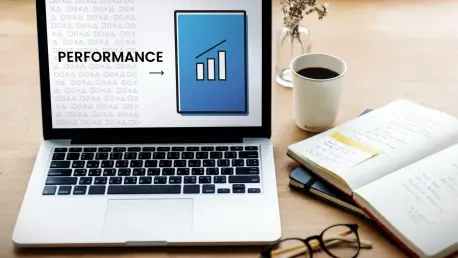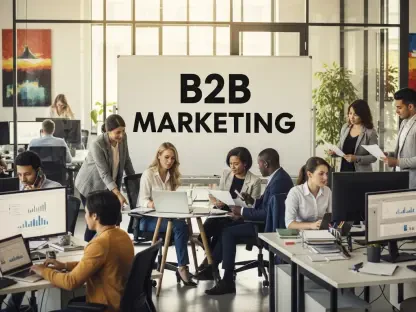Today, we’re thrilled to sit down with Anastasia Braitsik, a global leader in SEO, content marketing, and data analytics. With her deep expertise in digital marketing, Anastasia has helped countless brands navigate the ever-evolving landscape of online advertising. In this conversation, we dive into the critical topic of creative fatigue in advertising, exploring how it affects campaign performance, the warning signs to watch for, and practical strategies to keep ads fresh and effective. From understanding an ad’s lifecycle to tackling platform-specific challenges, Anastasia shares actionable insights to help marketers stay ahead of the curve.
Can you explain what creative fatigue means in the context of advertising and why it’s such a pressing issue today?
Creative fatigue is when an ad loses its effectiveness over time due to overexposure or audience saturation. Essentially, people get tired of seeing the same ad, and it stops grabbing their attention or driving action. This has always been a challenge in advertising, but it’s become more pronounced in the digital age. With platforms controlling so much of targeting and optimization through algorithms, creative is one of the last areas where marketers have direct influence. Plus, the speed and scale of digital campaigns mean ads can reach saturation much faster than in traditional media.
What are some early warning signs of creative fatigue that marketers should be on the lookout for?
The first red flags often show up in your metrics. A declining click-through rate, or CTR, is a big one—it means fewer people are engaging with the ad. You might also see cost-per-click, or CPC, start to rise as the platform struggles to get results, or a drop in conversion rates as the ad loses its persuasive power. Beyond numbers, if you notice your audience isn’t responding with the same enthusiasm—less social buzz or feedback—that’s another sign the ad is losing steam. Tracking these trends over time against your own benchmarks is key.
How does the quality of an ad play into creative fatigue, and what defines a high-quality ad in your view?
Ad quality is huge because a poorly crafted ad will burn out much faster than a well-made one. A high-quality ad is relevant to the audience’s needs or interests and resonant—it connects emotionally or intellectually, making them stop and pay attention. Think of a clever visual or a message that hits home. But even the best ads can’t escape fatigue if they’re overexposed. It’s like hearing a great joke too many times; it just doesn’t land anymore. Quality buys you time, but not immunity.
Can you walk us through the concept of an ad’s natural lifecycle and how it varies across different platforms?
Every ad has a lifecycle—think of it as a beginning, middle, and end. It starts strong with high engagement, peaks as it reaches its core audience, then naturally declines as familiarity sets in. The timeline varies by platform due to audience behavior and algorithm differences. For instance, on TikTok, trends move fast, so ads might have a shorter shelf life, sometimes just days or weeks. On Google, with intent-driven searches, an ad might hold relevance longer. Meta sits somewhere in between, depending on how visual or viral the content is. Knowing these patterns helps you plan refreshes before decline hits.
How often should marketers refresh their ads to combat creative fatigue, and what factors influence that timing?
There’s no one-size-fits-all answer, but refreshing every few weeks is a good starting point for most digital campaigns. The exact timing depends on factors like budget and audience size. Bigger budgets often mean higher frequency, so ads wear out faster. A smaller, niche audience can also get saturated quickly. I’ve seen small tweaks—like swapping a headline or image—extend an ad’s life significantly without needing a full overhaul. It’s about testing and finding that sweet spot for your specific campaign.
What happens when an ad reaches audience saturation, and how can marketers detect it early?
Audience saturation is when the same people see your ad too many times, and performance tanks. Engagement drops, costs rise, and you’re essentially wasting budget on uninterested eyes. To spot it early, keep an eye on frequency and reach metrics. Frequency tells you how often each person sees the ad, while reach shows how many unique people you’re hitting. If frequency climbs but reach flatlines, you’re overexposing to the same group. Adjusting your targeting or budget to expand reach can help prevent this.
With some platforms not offering frequency caps, how can marketers manage overexposure on places like Meta or TikTok?
It’s trickier on platforms without frequency caps, but you can still take control. One workaround is to manually monitor frequency metrics and pause or adjust campaigns when they get too high—say, above 3 for prospecting or 5 for retargeting. You can also rotate multiple creative variations to keep things fresh for the same audience. Campaign planning becomes critical here; you might need to allocate budget more conservatively or broaden targeting sooner to avoid hammering the same users repeatedly.
When a platform’s algorithm starts demoting an underperforming ad, what steps can marketers take to recover?
When an algorithm cuts delivery—shown by declining impressions or spend despite stable budgets—it’s often because it’s lost confidence in the ad’s ability to meet your goals. First, check your metrics for sharp drops in CTR or conversions that might have triggered this. Look at saturation too; if frequency is high, expand your audience or lower spend. Then, refresh the creative with a new version under a different ad ID to reset the algorithm’s learning phase. Avoid drastic changes to bids or targeting, though—those can delay recovery by restarting the learning process.
What’s your forecast for the future of creative fatigue as digital advertising continues to evolve?
I think creative fatigue will remain a core challenge, especially as platforms lean harder into automation and AI. While these tools can optimize delivery, they can’t fully predict human behavior or emotional response to ads. I see marketers needing to double down on storytelling and rapid testing to stay ahead. We might also see more platform features to combat fatigue, like built-in creative rotation or smarter frequency management. Ultimately, the human touch—understanding your audience deeply—will be what separates successful campaigns from the noise.









